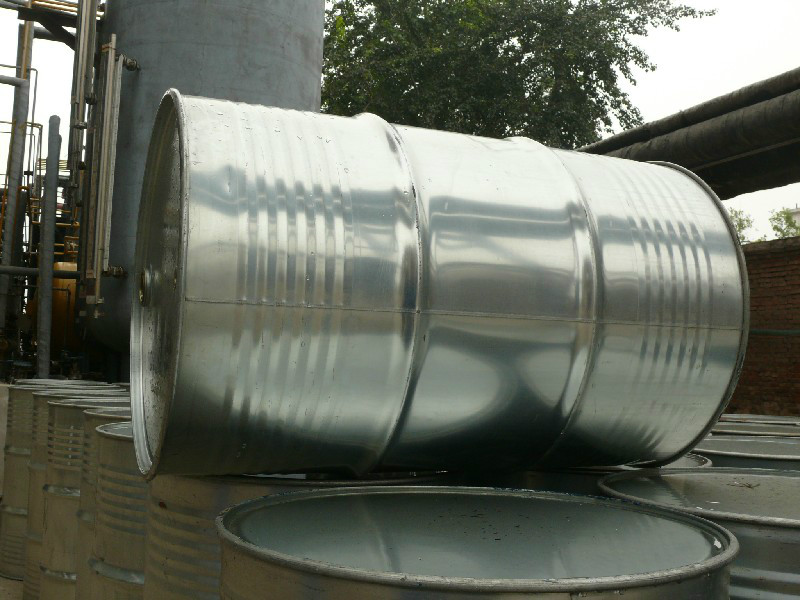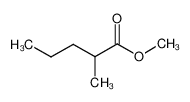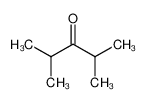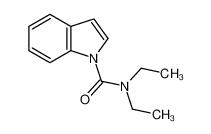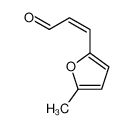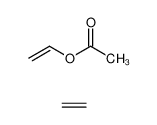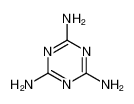| Product name | acetaldehyde |
|---|
| Product number | - |
|---|---|
| Other names | FORMOL |
| Identified uses | For industry use only. The predominant use of acetaldehyde is as an intermediate in the synthesis of other chemicals. Acetaldehyde is used in the production of perfumes, polyester resins, and basic dyes. Acetaldehyde is also used as a fruit and fish preservative, as a flavoring agent, and as a denaturant for alcohol, in fuel compositions, for hardening gelatin, and as a solvent in the rubber, tanning, and paper industries. |
|---|---|
| Uses advised against | no data available |
| Company | MOLBASE (Shanghai) Biotechnology Co., Ltd. |
|---|---|
| Address | Floor 4 & 5, Building 12, No. 1001 North Qinzhou Road, Xuhui District, Shanghai, China |
| Telephone | +86(21)64956998 |
| Fax | +86(21)54365166 |
| Emergency phone number | +86-400-6021-666 |
|---|---|
| Service hours | Monday to Friday, 9am-5pm (Standard time zone: UTC/GMT +8 hours). |
Flammable liquids, Category 1
Eye irritation, Category 2
Specific target organ toxicity – single exposure, Category 3
Carcinogenicity, Category 2
2.2 GHS label elements, including precautionary statements| Pictogram(s) | 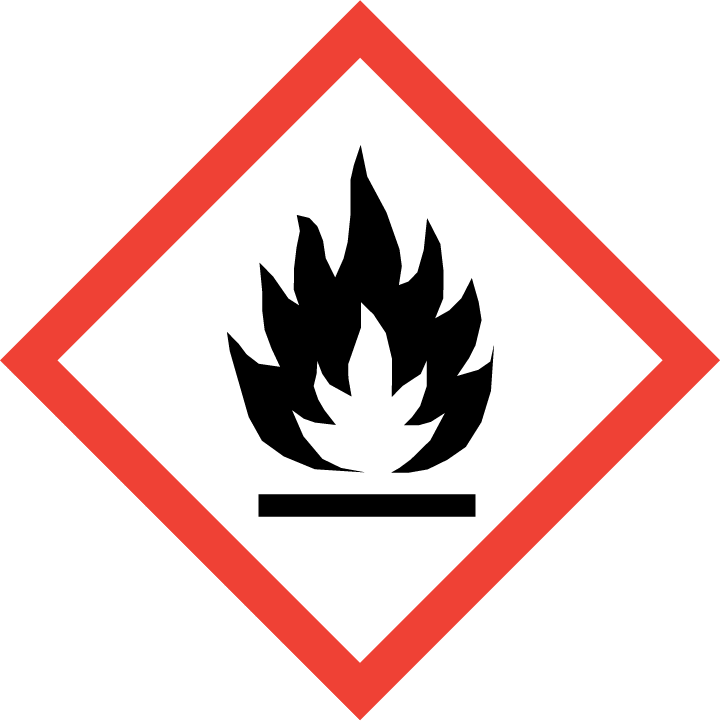 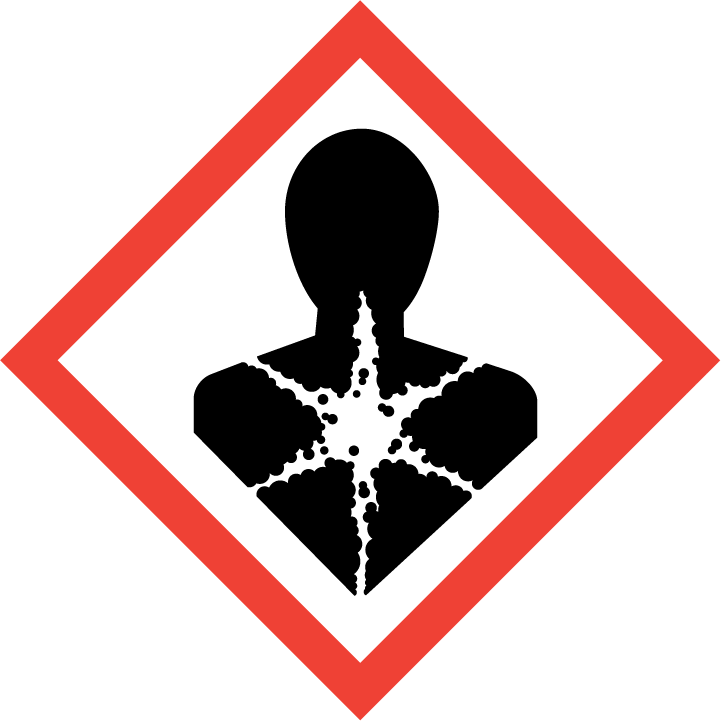 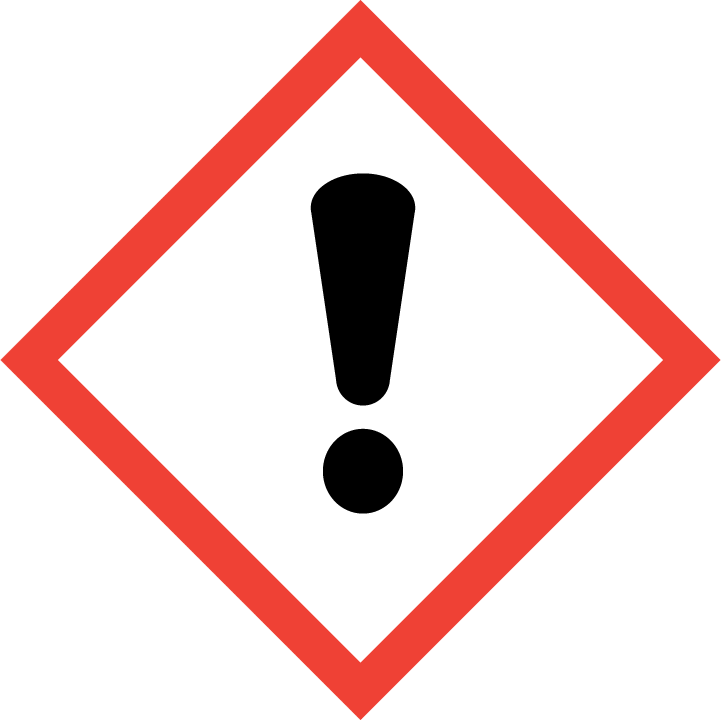 |
|---|---|
| Signal word | Danger |
| Hazard statement(s) | H224 Extremely flammable liquid and vapour H319 Causes serious eye irritation H335 May cause respiratory irritation H351 Suspected of causing cancer |
| Precautionary statement(s) | |
| Prevention | P210 Keep away from heat, hot surfaces, sparks, open flames and other ignition sources. No smoking. P233 Keep container tightly closed. P240 Ground and bond container and receiving equipment. P241 Use explosion-proof [electrical/ventilating/lighting/...] equipment. P242 Use non-sparking tools. P243 Take action to prevent static discharges. P280 Wear protective gloves/protective clothing/eye protection/face protection. P264 Wash ... thoroughly after handling. P261 Avoid breathing dust/fume/gas/mist/vapours/spray. P271 Use only outdoors or in a well-ventilated area. P201 Obtain special instructions before use. P202 Do not handle until all safety precautions have been read and understood. |
| Response | P303+P361+P353 IF ON SKIN (or hair): Take off immediately all contaminated clothing. Rinse skin with water [or shower]. P370+P378 In case of fire: Use ... to extinguish. P305+P351+P338 IF IN EYES: Rinse cautiously with water for several minutes. Remove contact lenses, if present and easy to do. Continue rinsing. P337+P313 If eye irritation persists: Get medical advice/attention. P304+P340 IF INHALED: Remove person to fresh air and keep comfortable for breathing. P312 Call a POISON CENTER/doctor/…if you feel unwell. P308+P313 IF exposed or concerned: Get medical advice/ attention. |
| Storage | P403+P235 Store in a well-ventilated place. Keep cool. P403+P233 Store in a well-ventilated place. Keep container tightly closed. P405 Store locked up. |
| Disposal | P501 Dispose of contents/container to ... |
none
3.Composition/information on ingredients 3.1 Substances| Chemical name | Common names and synonyms | CAS number | EC number | Concentration |
|---|---|---|---|---|
| acetaldehyde | acetaldehyde | 75-07-0 | none | 100% |
Consult a physician. Show this safety data sheet to the doctor in attendance.
If inhaledFresh air, rest. Refer for medical attention.
In case of skin contactRemove contaminated clothes. Rinse and then wash skin with water and soap. Refer for medical attention .
In case of eye contactFirst rinse with plenty of water for several minutes (remove contact lenses if easily possible), then refer for medical attention.
If swallowedRinse mouth. Give one or two glasses of water to drink. Refer for medical attention .
4.2 Most important symptoms/effects, acute and delayedBreathing vapors will be irritating and may cause nausea, vomiting, headache, and unconsciousness. Contact with eyes may cause burns and eye damage. Skin contact from clothing wet with the chemical causes burns or severe irritation. (USCG, 1999)
4.3 Indication of immediate medical attention and special treatment needed, if necessaryImmediate first aid: Ensure that adequate decontamination has been carried out. If patient is not breathing, start artificial respiration, preferably with a demand-valve resuscitator, bag-valve-mask device, or pocket mask, as trained. Perform CPR as necessary. Immediately flush contaminated eyes with gently flowing water. Do not induce vomiting. If vomiting occurs, lean patient forward or place on left side (head-down position, if possible) to maintain an open airway and prevent aspiration. Keep patient quiet and maintain normal body temperature. Obtain medical attention. /Aldehydes and Related Compounds/
5.Fire-fighting measures 5.1 Extinguishing media Suitable extinguishing mediaSuitable extinguishing media: Use water spray, alcohol-resistant foam, dry chemical or carbon dioxide.
5.2 Specific hazards arising from the chemicalSpecial Hazards of Combustion Products: Produces irritating vapor when heated Behavior in Fire: Vapors are heavier than air and may travel a considerable distance to a source of ignition and flash back. (USCG, 1999)
5.3 Special protective actions for fire-fightersWear self-contained breathing apparatus for firefighting if necessary.
6.Accidental release measures 6.1 Personal precautions, protective equipment and emergency proceduresUse personal protective equipment. Avoid dust formation. Avoid breathing vapours, mist or gas. Ensure adequate ventilation. Evacuate personnel to safe areas. Avoid breathing dust. For personal protection see section 8.
6.2 Environmental precautionsRemove all ignition sources. Evacuate danger area! Personal protection: filter respirator for organic gases and vapours adapted to the airborne concentration of the substance. Do NOT let this chemical enter the environment. Collect leaking liquid in sealable containers. Absorb remaining liquid in sand or inert absorbent. Then store and dispose of according to local regulations. Do NOT absorb in saw-dust or other combustible absorbents. Remove vapour with fine water spray.
6.3 Methods and materials for containment and cleaning upAccidental release measures. Personal precautions, protective equipment and emergency procedures: Use personal protective equipment. Avoid breathing vapors, mist or gas. Ensure adequate ventilation. Remove all sources of ignition. Evacuate personnel to safe areas. Beware of vapors accumulating to form explosive concentrations. Vapors can accumulate in low areas.; Environmental precautions: Prevent further leakage or spillage if safe to do so. Do not let product enter drains. Discharge into the environment must be avoided.; Methods and materials for containment and cleaning up: Contain spillage, and then collect with an electrically protected vacuum cleaner or by wet-brushing and place in container for disposal according to local regulations.
7.Handling and storage 7.1 Precautions for safe handlingAvoid contact with skin and eyes. Avoid formation of dust and aerosols. Avoid exposure - obtain special instructions before use.Provide appropriate exhaust ventilation at places where dust is formed. For precautions see section 2.2.
7.2 Conditions for safe storage, including any incompatibilitiesFireproof. Separated from incompatible materials. See Chemical Dangers. Cooled. Keep in the dark. Store only if stabilized.Conditions for safe storage, including any incompatibilities: Keep container tightly closed in a dry and well-ventilated place. Containers which are opened must be carefully resealed and kept upright to prevent leakage. Recommended storage temperature: 2 - 8°C.
8.Exposure controls/personal protection 8.1 Control parameters Occupational Exposure limit valuesNIOSH considers acetaldehyde to be a potential occupational carcinogen.
NIOSH usually recommends that occupational exposures to carcinogens be limited to the lowest feasible concentration.
Biological limit valuesno data available
8.2 Appropriate engineering controlsHandle in accordance with good industrial hygiene and safety practice. Wash hands before breaks and at the end of workday.
8.3 Individual protection measures, such as personal protective equipment (PPE) Eye/face protectionSafety glasses with side-shields conforming to EN166. Use equipment for eye protection tested and approved under appropriate government standards such as NIOSH (US) or EN 166(EU).
Skin protectionWear impervious clothing. The type of protective equipment must be selected according to the concentration and amount of the dangerous substance at the specific workplace. Handle with gloves. Gloves must be inspected prior to use. Use proper glove removal technique(without touching glove's outer surface) to avoid skin contact with this product. Dispose of contaminated gloves after use in accordance with applicable laws and good laboratory practices. Wash and dry hands. The selected protective gloves have to satisfy the specifications of EU Directive 89/686/EEC and the standard EN 374 derived from it.
Respiratory protectionWear dust mask when handling large quantities.
Thermal hazardsno data available
9.Physical and chemical properties| Physical state | clear, colorless liquid |
|---|---|
| Colour | Volatile liquid or gas |
| Odour | Pungent, fruity odor |
| Melting point/ freezing point | -123ºC |
| Boiling point or initial boiling point and boiling range | 21ºC |
| Flammability | Class IA Flammable Liquid: Fl.P. below 22.78°C and BP below 37.78°C.Extremely flammable. |
| Lower and upper explosion limit / flammability limit | Lower flammable limit: 4.0% by volume; Upper flammable limit: 60% by volume |
| Flash point | -27ºC |
| Auto-ignition temperature | 185°C; 148.89°C; 175°C (USCG, 1999) |
| Decomposition temperature | no data available |
| pH | no data available |
| Kinematic viscosity | 0.253 mPa s at 9.5°C; 0.21 mPa s at 20°C |
| Solubility | In water:> 500 g/L (20 ºC) |
| Partition coefficient n-octanol/water (log value) | log Kow = -0.34 |
| Vapour pressure | 52 mm Hg ( 37 °C) |
| Density and/or relative density | 0.788 |
| Relative vapour density | 1.03 (vs air) |
| Particle characteristics | no data available |
no data available
10.2 Chemical stabilityAvoid exposure to air any longer than necessary so as to prevent peroxide formation. Stable under recommended storage conditions. Test for peroxide formation before distillation or evaporation. Test for peroxide formation or discard after 1 year.
10.3 Possibility of hazardous reactionsHighly flammable liquid.The vapour is heavier than air and may travel along the ground; distant ignition possible.ACETALDEHYDE undergoes a vigorously exothermic condensation reaction in contact with strong acids, bases or traces of metals. Can react vigorously with oxidizing reagents such as dinitrogen pentaoxide, hydrogen peroxide, oxygen, silver nitrate, etc. Contamination often leads either to reaction with the contaminant or polymerization, both with the evolution of heat. Can react violently with acid anhydrides, alcohols, ketones, phenols, ammonia, hydrogen cyanide, hydrogen sulfide, halogens, phosphorus, isocyanates, concentrated sulfuric acid, and aliphatic amines. Reactions with cobalt chloride, mercury(II) chlorate or perchlorate form sensitive, explosive products [Sax, 9th ed., 1996, p. 5]. An oxygenation reaction of acetaldehyde in the presence of cobalt acetate at -20°C exploded violently when stirred. The event was ascribed to peroxyacetate formation [Phillips B. et al., J. Am. Chem. Soc., 1957, 79, p. 5982].
10.4 Conditions to avoidno data available
10.5 Incompatible materialsIncompatible materials: Oxidizing agents, reducing agents, acids, nitric acid, peroxides, bases, sodium hydroxide, amines, ammonia, oxygen. Warning: Acetaldehyde is oxidized rapidly and exothermically by air, to acetic acid, acid anhydrides, alcohols, halogens, ketones, phenol, hydrogen sulfide gas, hydrogen peroxide.
10.6 Hazardous decomposition productsDecomposes above 400°C to form ... methane & carbon monoxide.
11.Toxicological information Acute toxicity- Oral: LD50 Rat oral 1930 mg/kg
- Inhalation: LC50 Rat inhalation 37 g/cu m/30 min
- Dermal: no data available
no data available
Serious eye damage/irritationno data available
Respiratory or skin sensitizationno data available
Germ cell mutagenicityno data available
CarcinogenicityAcetaldehyde is reasonably anticipated to be a human carcinogen based on sufficient evidence of carcinogenicity from studies in experimental animals.
Reproductive toxicityNo information is available on the reproductive or developmental effects of acetaldehyde in humans. Acetaldehyde has been shown, in animals, to cross the placenta to the fetus. Data from animal studies suggest that acetaldehyde may be a potential developmental toxin. In one study, a high incidence of embryonic resorptions was observed in mice injected with acetaldehyde. In rats exposed to acetaldehyde by injection, skeletal malformations, reduced birth weight, and increased postnatal mortality have been reported.
STOT-single exposureno data available
STOT-repeated exposureno data available
Aspiration hazardno data available
12.Ecological information 12.1 Toxicity- Toxicity to fish: EC50; Species: Pimephales promelas (Fathead minnow); Conditions: flow-through bioassasy with measured concentrations, 23.9°C, dissolved oxygen 7.2 mg/L, hardness 53.0 mg/L calcium carbonate, alkalinity 43.2 mg/L calcium carbonate, and pH 7.63; Concentration: 30.8 mg/L for 96 hr (confidence limit 28.0-34.0 mg/L); Effect: loss of equilibrium
- Toxicity to daphnia and other aquatic invertebrates: EC50; Species: Daphnia magna (Waterflea); Conditions: static; Concentration: 42 mg/L for 48 hr; Effect: immobilization
- Toxicity to algae: EC50; Species: Pseudokirchneriella subcapitata (Green algae) exponential growth phase, 15000 cells/mL, UTEX 1648; Conditions: static, 24°C, dissolved oxygen 1-2 mg/L; Concentration: 3359 ug/L for 48 hr; Effect: physiology, decreased photosynthesis
- Toxicity to microorganisms: no data available
AEROBIC: Acetaldehyde, present at 100 mg/L, reached 80% of its theoretical BOD in 2 weeks using an activated sludge inoculum at 30 mg/L and the Japanese MITI test which classified the compound as readily biodegradable(1). Acetaldehyde was also easily biodegraded by biological sewage treatment(2). Other laboratory screening tests confirm the biodegradability of acetaldehyde by acclimated sludge and sewage(3-7) with theoretical BODs of 28% in 24 hr(3), 100% in 5 hr(4), 40.5% in 5 days(8), and 70% in 5 days(5). Acetaldehyde was oxidized in a silty clay loam but no rates were given(9). In a die-away test in seawater, acetaldehyde concentrations declined to approximately 25% of initial values in 1 hr, whereas no decline in concentration was observed in sterile controls(10).
12.3 Bioaccumulative potentialAn estimated BCF of 3 was calculated in fish for acetaldehyde(SRC), using a log Kow of -0.34(1) and a regression-derived equation(2). According to a classification scheme(3), this BCF suggests the potential for bioconcentration in aquatic organisms is low(SRC).
12.4 Mobility in soilUsing a structure estimation method based on molecular connectivity indices(1), the Koc of acetaldehyde can be estimated to be 1(SRC). According to a classification scheme(2), this estimated Koc value suggests that acetaldehyde is expected to have very high mobility in soil.
12.5 Other adverse effectsno data available
13.Disposal considerations 13.1 Disposal methods ProductThe material can be disposed of by removal to a licensed chemical destruction plant or by controlled incineration with flue gas scrubbing. Do not contaminate water, foodstuffs, feed or seed by storage or disposal. Do not discharge to sewer systems.
Contaminated packagingContainers can be triply rinsed (or equivalent) and offered for recycling or reconditioning. Alternatively, the packaging can be punctured to make it unusable for other purposes and then be disposed of in a sanitary landfill. Controlled incineration with flue gas scrubbing is possible for combustible packaging materials.
14.Transport information 14.1 UN Number| ADR/RID: UN1089 | IMDG: UN1089 | IATA: UN1089 |
| ADR/RID: ACETALDEHYDE |
| IMDG: ACETALDEHYDE |
| IATA: ACETALDEHYDE |
| ADR/RID: 3 | IMDG: 3 | IATA: 3 |
| ADR/RID: III | IMDG: III | IATA: III |
| ADR/RID: no | IMDG: no | IATA: no |
no data available
14.7 Transport in bulk according to Annex II of MARPOL 73/78 and the IBC Codeno data available
15.Regulatory information 15.1 Safety, health and environmental regulations specific for the product in question| Chemical name | Common names and synonyms | CAS number | EC number |
|---|---|---|---|
| acetaldehyde | acetaldehyde | 75-07-0 | none |
| European Inventory of Existing Commercial Chemical Substances (EINECS) | Listed. | ||
| EC Inventory | Listed. | ||
| United States Toxic Substances Control Act (TSCA) Inventory | Listed. | ||
| China Catalog of Hazardous chemicals 2015 | Listed. | ||
| New Zealand Inventory of Chemicals (NZIoC) | Listed. | ||
| Philippines Inventory of Chemicals and Chemical Substances (PICCS) | Listed. | ||
| Vietnam National Chemical Inventory | Listed. | ||
| Chinese Chemical Inventory of Existing Chemical Substances (China IECSC) | Listed. | ||
| Creation Date | Aug 17, 2017 |
|---|---|
| Revision Date | Aug 17, 2017 |
- CAS: Chemical Abstracts Service
- ADR: European Agreement concerning the International Carriage of Dangerous Goods by Road
- RID: Regulation concerning the International Carriage of Dangerous Goods by Rail
- IMDG: International Maritime Dangerous Goods
- IATA: International Air Transportation Association
- TWA: Time Weighted Average
- STEL: Short term exposure limit
- LC50: Lethal Concentration 50%
- LD50: Lethal Dose 50%
- EC50: Effective Concentration 50%
- IPCS - The International Chemical Safety Cards (ICSC), website: http://www.ilo.org/dyn/icsc/showcard.home
- HSDB - Hazardous Substances Data Bank, website: https://toxnet.nlm.nih.gov/newtoxnet/hsdb.htm
- IARC - International Agency for Research on Cancer, website: http://www.iarc.fr/
- eChemPortal - The Global Portal to Information on Chemical Substances by OECD, website: http://www.echemportal.org/echemportal/index?pageID=0&request_locale=en
- CAMEO Chemicals, website: http://cameochemicals.noaa.gov/search/simple
- ChemIDplus, website: http://chem.sis.nlm.nih.gov/chemidplus/chemidlite.jsp
- ERG - Emergency Response Guidebook by U.S. Department of Transportation, website: http://www.phmsa.dot.gov/hazmat/library/erg
- Germany GESTIS-database on hazard substance, website: http://www.dguv.de/ifa/gestis/gestis-stoffdatenbank/index-2.jsp
- ECHA - European Chemicals Agency, website: https://echa.europa.eu/







